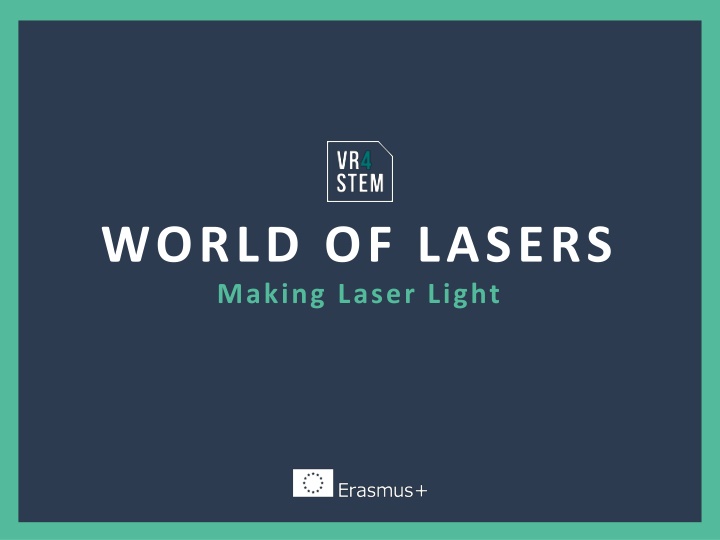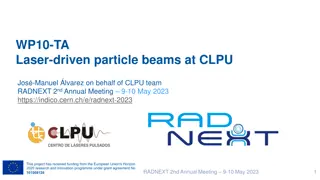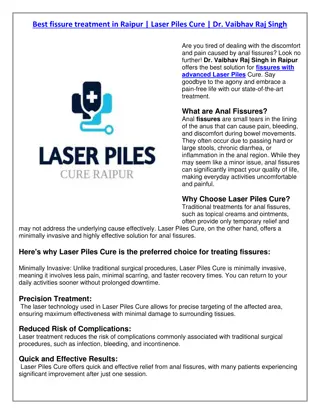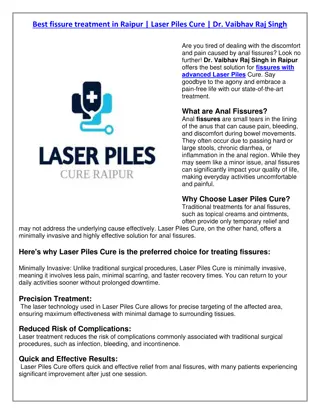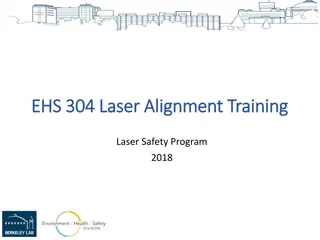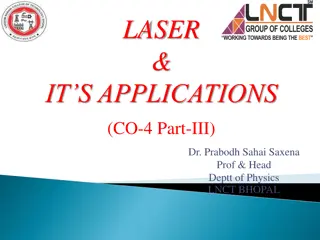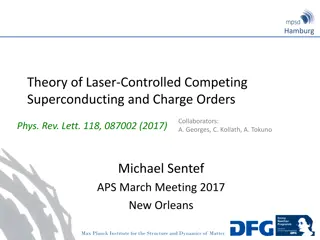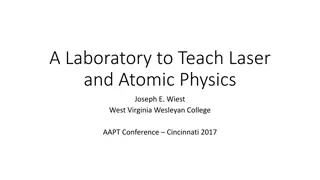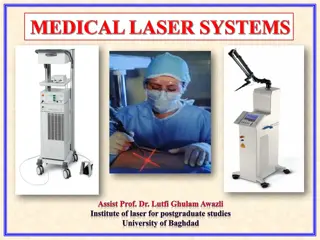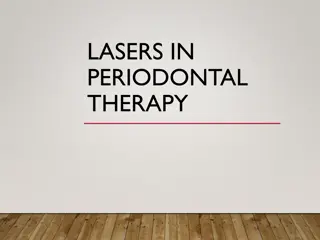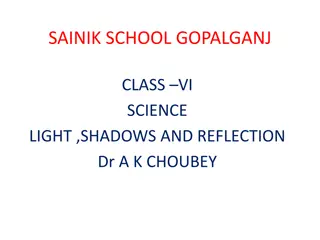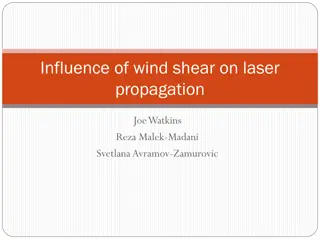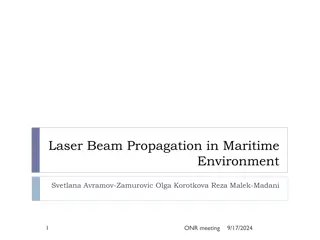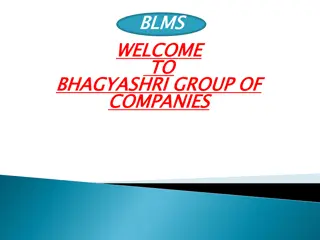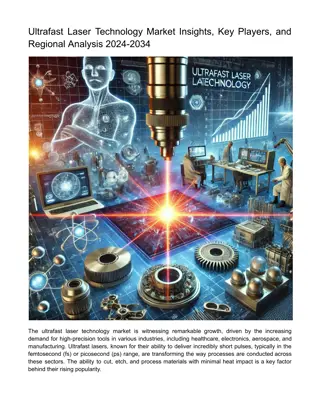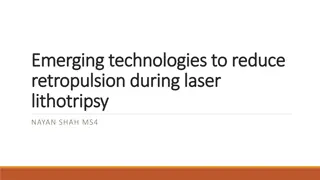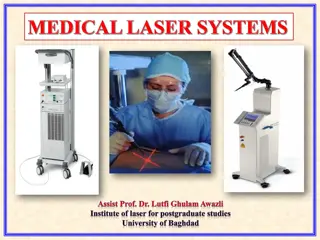Making Laser Light: How Laser Technology Works
Laser light is created by a process involving a flash tube and a crystal. High-voltage electric supply makes the tube flash, pumping energy into the crystal in the form of photons. Atoms in the crystal absorb this energy through absorption, causing electrons to jump to higher energy levels. These excited atoms then emit photons through spontaneous emission. Stimulated emission increases the light's strength, leading to light amplification. The photons bounce within the crystal, forming a concentrated beam of laser light. This process demonstrates the fascinating science behind laser technology.
Download Presentation

Please find below an Image/Link to download the presentation.
The content on the website is provided AS IS for your information and personal use only. It may not be sold, licensed, or shared on other websites without obtaining consent from the author.If you encounter any issues during the download, it is possible that the publisher has removed the file from their server.
You are allowed to download the files provided on this website for personal or commercial use, subject to the condition that they are used lawfully. All files are the property of their respective owners.
The content on the website is provided AS IS for your information and personal use only. It may not be sold, licensed, or shared on other websites without obtaining consent from the author.
E N D
Presentation Transcript
WORLD OF LASERS Making Laser Light 1
MAKING LASER LIGHT How do the flash tube and the crystal make laser light? STEPS: 1. A high-voltage electric supply makes the tube flash on and off. 2. Every time the tube flashes, it "pumps" energy into the ruby crystal. The flashes it makes inject energy into the crystal in the form of photons.
STEPS 3. Atoms in the ruby crystal soak up this energy in a process called absorption. When an atom absorbs a photon of energy, one of its electrons jumps from a low energy level to a higher one. This puts the atom into an excited state, but makes it unstable. Because the excited atom is unstable, the electron can stay in the higher energy level only for a few milliseconds.
STEPS It falls back to its original level, giving off the energy it absorbed as a new photon of light radiation (small blue blob). This process is called spontaneous emission. 4. The photons that atoms give off zoom up and down inside the ruby crystal, traveling at the speed of light.
STEPS 5. Every so often, one of these photons hits an already excited atom. When this happens, the excited atom gives off two photons of light instead of one. This is called stimulated emission. Now one photon of light has produced two, so the light has been amplified (increased in strength).
STEPS In other words, "light amplification" (an increase in the amount of light) has been caused by Stimulated Emission of Radiation" (hence the name "laser", because that's exactly how a laser works!)
STEPS 6. A mirror at one end of the laser tube keeps the photons bouncing back and forth inside the crystal. 7. A partial mirror at the other end of the tube bounces some photons back into the crystal but lets some escape. 8. The escaping photons form a very concentrated beam of powerful laser light.
